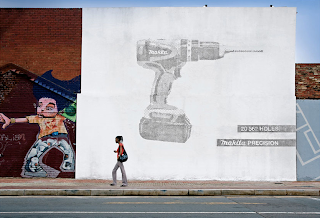
The review order (via ReviewMe) for
MediaBids.com, an online marketplace for ad space in print media, caught me off guard -- print is not exactly making headlines (
pun!) for the growth of its ad revenue:

I am not a media
buyer and my experience with tools of that trade is limited to only occasional encounters, so I asked my media buyer colleagues (special thanks to Erica and Nicole) for guidance. Here are some thoughts resulting from our conversation.
- Even without print's decline, an online marketplace for newspapers and magazines must be a tough business to run. Consider something more esoteric, like podcasting. We don't buy a lot of podcast time, don't know too many reps, and a specialized marketplace like, say,
Podtrac addresses a still rare but well defined need. It is hard, on the other hand, to be more established than print. Most of the large agencies are already using well-entrenched tools such as SRDS -- expensive services, contracts for which are made on the agency level.
- In the long term, other things being equal, it becomes the question of cost. One popular buying tool charges agencies a flat 4% fee on each media buy. MediaBids claims to be free for advertisers but takes an 8.5% commission from publishers.
- Media buyers and media planners are responsible for different parts of the process and use narrowly specialized tools. Planners need access to demo data. Buyers usually work on tight schedules and need to make direct contact with reps.
- Ad selling is still more art than science. I have a
favorite quote from Seth Godin, and it is this:
"There are two kinds of advertising and this leads to two kinds of ad sales. The first kind is the rational kind. This is advertising that works, if 'works' is defined as, "pay $3 and make $4." [...]
The second kind of advertising is the glamorous kind, the kind that people think of when they think of the Super Bowl or Time magazine or of profitable ads that are worth selling. These ads don't sell because they work. They sell because they are sold."
The problem with most ad marketplaces is that they sell the ads of the second kind as if they were the ads "that work" of the first kind.
- Ad buying, too, is art. A quote from a buyer: "How do I 'leverage' my client's brand with an automated tool?" Meaning, if my client historically has been avoiding print but wants to give it a try, I am likely to get a better "trial" rate for them.
- Last but not least: will automated ad exchanges with low barrier to entry make media agencies obsolete?



















